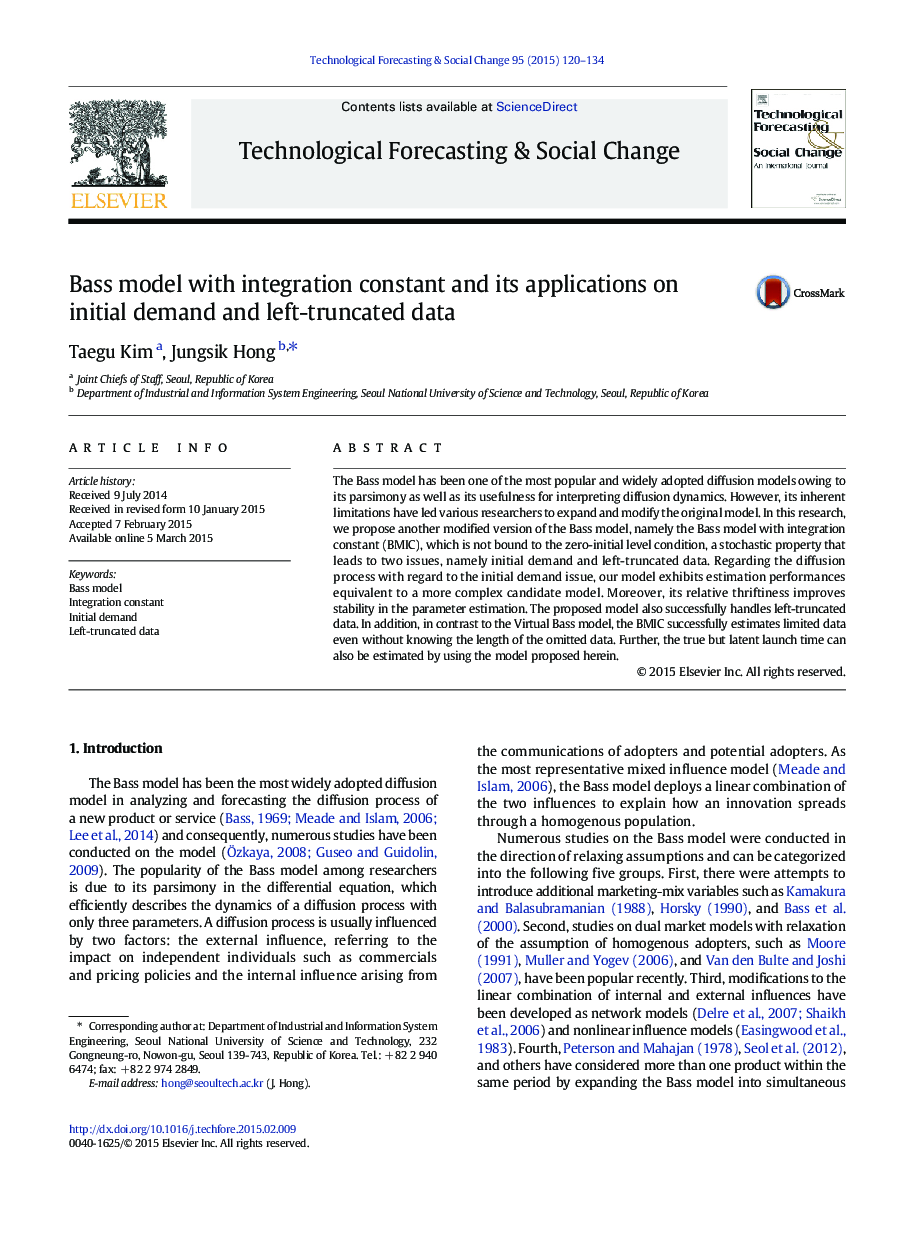| کد مقاله | کد نشریه | سال انتشار | مقاله انگلیسی | نسخه تمام متن |
|---|---|---|---|---|
| 896473 | 1472405 | 2015 | 15 صفحه PDF | دانلود رایگان |
• A modified version of the Bass model is proposed by introducing non-zero starting point.
• Initial demand phenomenon is successfully described.
• Stability of estimates and the reproducibility are improved.
• The proposed model successfully fits the left truncated data.
• Latent launch time can be accurately estimated.
The Bass model has been one of the most popular and widely adopted diffusion models owing to its parsimony as well as its usefulness for interpreting diffusion dynamics. However, its inherent limitations have led various researchers to expand and modify the original model. In this research, we propose another modified version of the Bass model, namely the Bass model with integration constant (BMIC), which is not bound to the zero-initial level condition, a stochastic property that leads to two issues, namely initial demand and left-truncated data. Regarding the diffusion process with regard to the initial demand issue, our model exhibits estimation performances equivalent to a more complex candidate model. Moreover, its relative thriftiness improves stability in the parameter estimation. The proposed model also successfully handles left-truncated data. In addition, in contrast to the Virtual Bass model, the BMIC successfully estimates limited data even without knowing the length of the omitted data. Further, the true but latent launch time can also be estimated by using the model proposed herein.
Journal: Technological Forecasting and Social Change - Volume 95, June 2015, Pages 120–134
